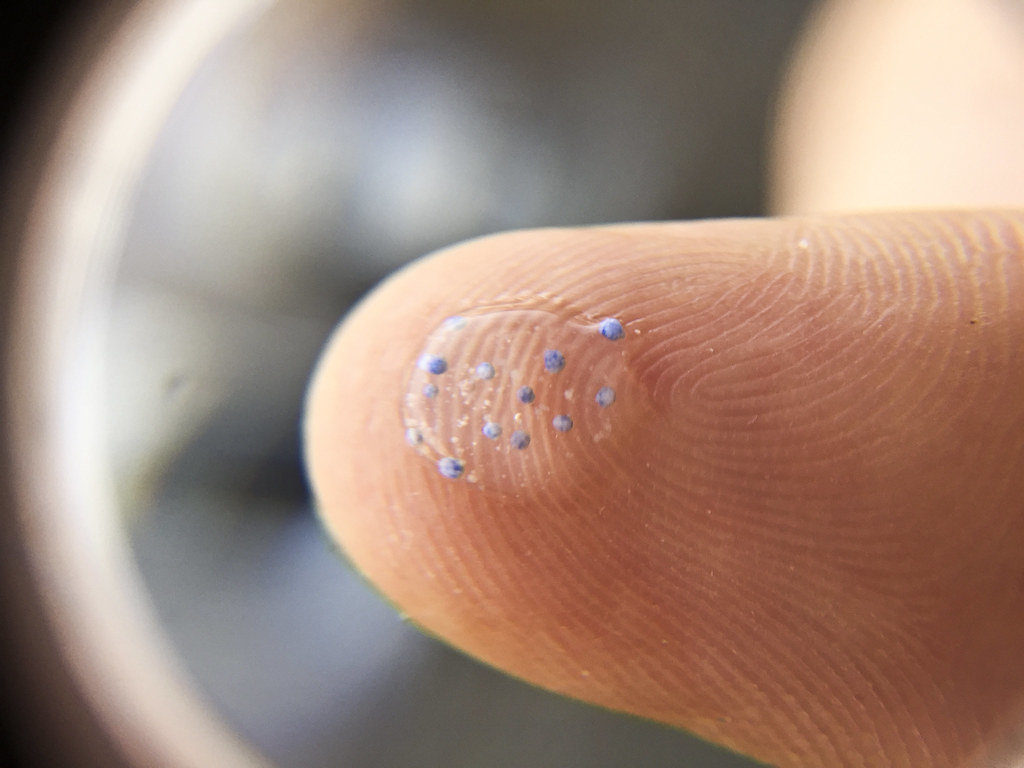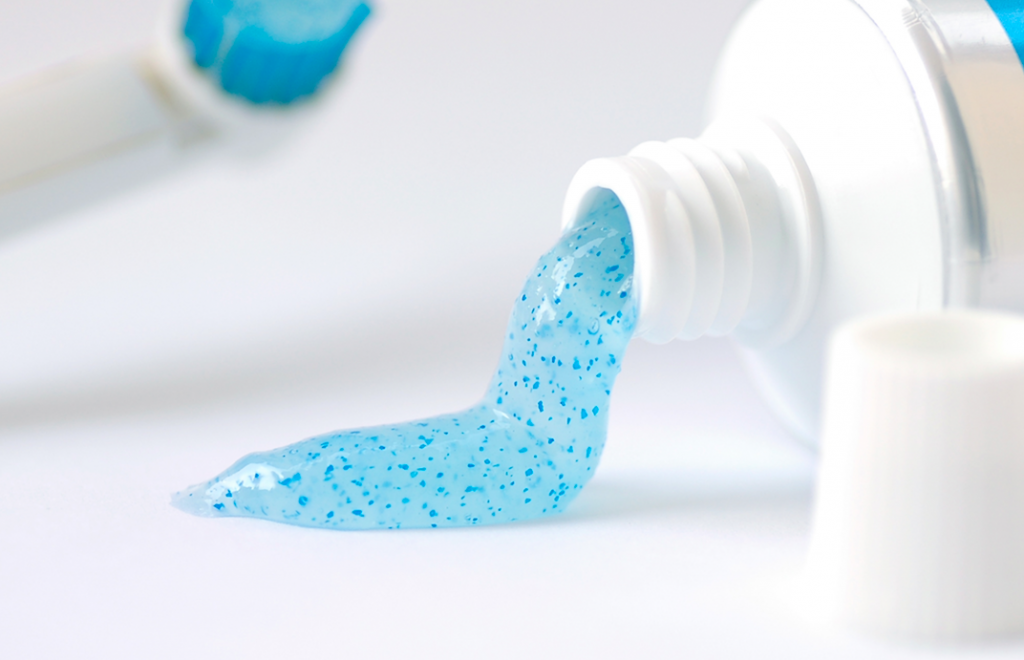Microplastics Everywhere
Watershed Issues | ecosystems, plastic, plastic-free July, pollution, and water | July 2019
Look around. What are you sitting on? Are you reading this on your iPhone? Computer? Does almost everything you own and buy contain plastic? How about after you woke up this morning, did you brush your teeth? Did you drive your car to work?
Plastic can be seen almost everywhere. But, what about the plastic you can’t see?
Extremely small pieces of plastics, commonly referred to as microplastics, are turning up everywhere they shouldn’t be. Researchers are finding them in our oceans, lakes, rivers, and groundwater. They are even showing up in rainwater samples collected from the Rocky Mountains, a recent study found. Another study completed in early spring found thousands of microplastic particles raining in the Pyrenees, 75 miles from the nearest city in France.
Humans are interacting with these small plastic particles every day without even noticing. These tiny plastic particles are entering our drinking water, our food, and our environment.

What are microplastics?
Microplastics are small pieces of plastic less than five millimetres long that are sometimes referred to by the cosmetic industry as microbeads5. They are used in manufacturing, industry, agriculture, and 3D printing3. They are in consumer products, such as synthetic clothing fabric, toothpaste, and skincare products3. They are also formed when larger pieces of plastics break down3.
Microplastics are categorized by primary and secondary microplastics2. Primary microplastics are purposefully made to be a specific size2. Secondary microplastics are bits of plastics that break down from larger pieces of plastic2. Primary and secondary microplastics are usually in the shape of fragments, pellets, or fibers5.
Primary microplastics were created by a manufacturer to be a certain size for a specific purpose2. They are little plastic spheres used in face washes, cosmetics, and toothpastes to exfoliate, emulsify, or as a cheap filler2. They are usually made from polyethylene, polypropylene, polyethylene, terephthalate, or nylon, which are words to keep in mind when shopping for products2. Natural substances like ground almonds, salt, or oatmeal were used until 50 years ago when they were replaced by plastic2.
Secondary microplastics are created from large pieces of plastic that have broken down over time and entered the environment2. Weathering from sunlight, currents, waves, or other physical stress break plastic into smaller pieces2. These microplastics usually have more variable shapes2.

Why are they a concern?
Microplastics are hardly visible to the naked eye4. They eventually reach surface water bodies since they are so small, and do not get filtered out by wastewater treatment systems2. There is a concern they could harm human health as they bioaccumulate through the food web2. Microplastics also absorb chemicals and harmful pollutants that could end up in our bodies2. Toxic chemicals absorbed by plastics build up over time and stay in the environment2.
Microplastics are not biodegradable; as a result, they never dissolve5. Since they are new to the environment, bacteria have not evolved to break down the carbon-carbon links found in plastic2. Plastic can constantly break down into smaller pieces but will always remain there2. If an organism ingests microplastics, health problems can occur such as reduced sperm production, insulin resistance, and impaired learning and memory3.
Phthalates are a group of chemicals, that have been detected on microplastics, found in hundreds of cosmetics like nail polish and hair spray3. Phthalate chemicals are known as endocrine disruptors that may cause certain hormone-related cancers3. Endocrine disruptors are chemicals that can interfere with hormones at certain doses3. These disruptions can cause cancerous tumors, congenital disabilities, and other developmental disorders3.
Microplastics are also a source of air pollution, occurring in dust and airborne particles2. Currently, the health effects of microplastics inhalation are unknown2.

When were they discovered?
Scientists have sporadically reported small plastic particles present in our oceans since 1970, but research into their distribution and impacts began in 20045. Recently, scientists have begun to study how microplastics are affecting freshwater and terrestrial ecosystems5.
Microplastics were first reported in freshwater systems in 20135. Since that time, microplastics have been seen on freshwater beaches, in lakes, and rivers in Africa, Europe, Asia, North America, and South America5. Just like our ocean systems, microplastics are very common in freshwater systems on a global scale5. Contamination of microplastics is greater near large population centers, but they have also been found in remote locations which could be a result of atmospheric deposition5.
The full consequences of microplastic pollution on human health is currently not entirely known, but the presence of microplastics on aquatic environments is now recognized as a serious global environmental issue5.
Where do they come from?

Microplastics are found everywhere in oceans, groundwater, and surface water bodies around the globe4. Major sources of microplastics include:
- Agricultural runoff
- Stormwater drainage
- Urban runoff
- Wastewater treatment plants
The use of plastic “mulch” to grow crops began in China during the 1970s3. It has become a widespread practice used in several other continents including Central Asia, Europe, and North America3. The plastic “mulch” sheets typically composed of polyethylene help conserve water, manage weeds, and enhance soil temperature which can increases crop yields by 20 to 60 percent3. Unfortunately, these sheets are expensive to collect and discard leading some farmers to remove the sheets partially3. The sheets then tear into small fragments that remain on the farmland where soils can then become enriched in plastic residues that will eventually runoff into nearby bodies of water3.
In consumer products, manufacturers like to add microplastic ingredients to cosmetics to act as an exfoliant or as a low-cost filler3. In some cases, up to 10% of a cosmetic product could be comprised of microplastic ingredients3. When microplastics get washed down the drain they end up at the closest wastewater treatment plant but very few, if any, get filtered during treatment since wastewater treatment plants are not designed to filter them out3.
Microplastics also come from fertilizers, flame retardants, paints, the break down of litter, and the break down of car tires3.
Who is at risk?
Research has shown that on average humans may be swallowing as many as 50,000 microplastic particles every year since they can be found in seafood, sugars, salt, drinking water, and beer2. Other organisms absorb or eat microplastics which can then be passed along the food chain4.
There are certain types of toothpaste, skincare products, and cosmetics with microplastics in them4. Visiting certain water bodies can also expose you to microplastics2.

What are some harmful chemicals that can be detected on microplastics?
- Dioxin
- Phthalates
- Persistent organic pollutants
- Polybrominated diphenyl ethers
- Polychlorinated biphenyls
- Polycyclic aromatic hydrocarbons
Reduce your risk by…
- Minimize the use of consumer products that contain microplastics (microbeads).
- Choose paper bags over plastic bags.
- Choose glass products over plastic ones.
- Recycle plastics.
- Never throw plastic items in lakes, rivers, oceans, or other bodies of water.
Which products contain microplastic ingredients and which do not?
There is no comprehensive list of all synthetic polymers that can be considered a microplastic ingredient since there are more than 550 microplastic ingredients used around the world in cosmetics and personal care products4.
It is important for conscious consumers to know the products they buy could contain microplastics or could be microplastic free.
Follow the link below to find out if the products you are currently using contain microplastics.
Beat the Microbead – Product Search
References
1Dubé, J. (2019, June 11). The everyday objects likely to be hit by federal ban on single-use plastics. Retrieved from National Post: https://nationalpost.com/news/canada/the-everyday-objects-likely-to-be-hit-by-federal-ban-on-single-use-plastics
2Motivans, E. (2018, August 6). The down-low on microplastics. Retrieved from ZME Science: https://www.zmescience.com/ecology/pollution-ecology/the-down-low-on-microplastics/#Why_are_they_a_problem
3NG, E. L. (2017, June 1). Plastic Pollutants Pervade Water and Land. Retrieved from The Scientist: https://www.the-scientist.com/features/plastic-pollutants-pervade-water-and-land-31445
4Plastic Soup Foundation. (2019). What are Microplastics? Retrieved from Beat the Micro Bead: https://www.beatthemicrobead.org/
5Rochman, C. M. (2018). Microplastics research – from sink to source. Science, 360(6384), 28-29. doi:10.1126/science.aar7734

